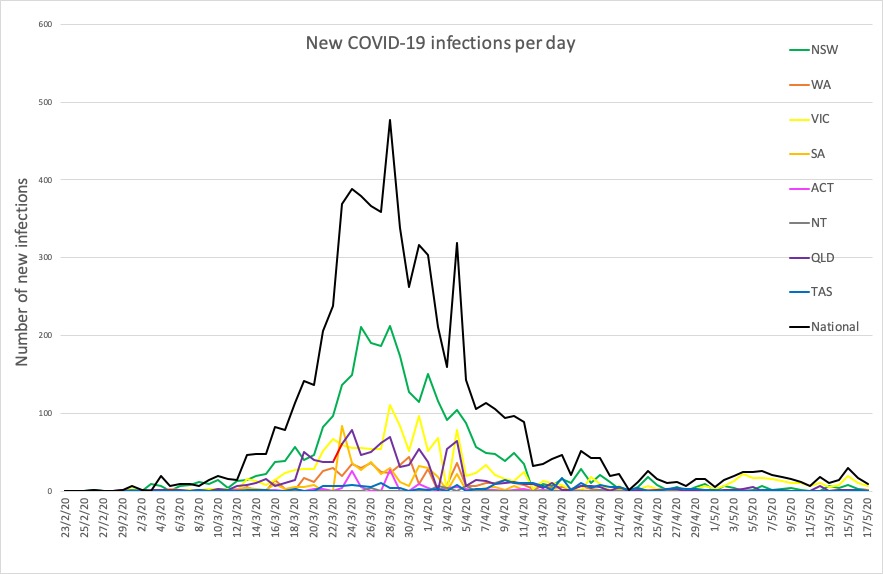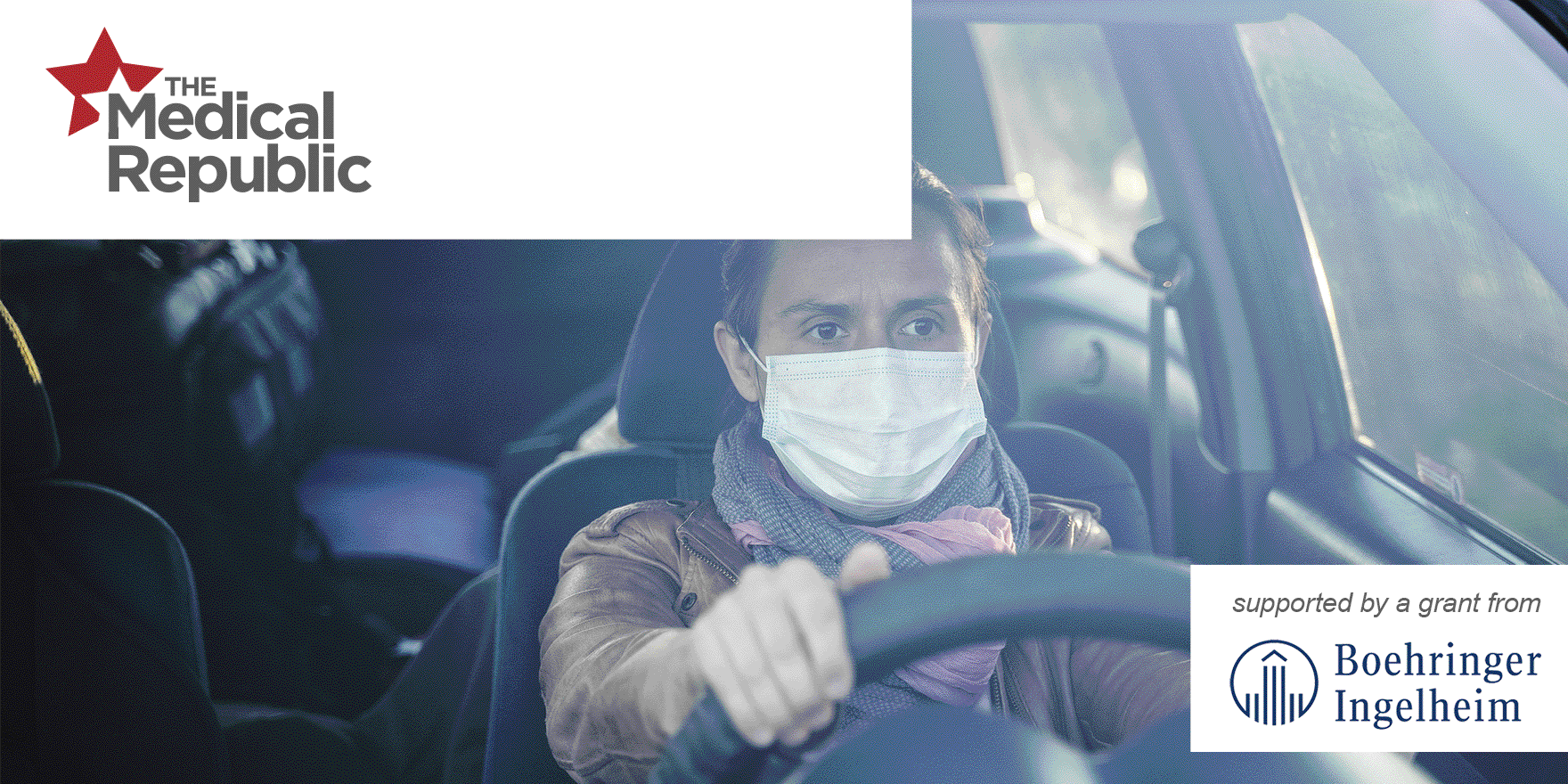The COVID-19 pandemic appears to have shortened life expectancy in Sweden by three years for men and two years for women.
That’s it for Monday on The Medical Republic‘s live COVID-19 blog.
Thanks to our sponsor and supporter for funding this project with an independent grant, Boehringer Ingelheim.
The latest
- COVID-19 knocks three years off male life expectancy in Sweden.
- Rate of asymptomatic COVID-19 presentations at 16%, meta-analysis finds.
- South Korean COVID-19 cluster traced to fitness dance classes.
- The COVID-19 pandemic appears to have shortened life expectancy in Sweden by three years for men and two years for women.
In a paper published on the preprint server MedRxiv, researchers looked at age- and sex-specific death rates for Sweden during 2020 and the previous five years, and found that from the beginning of April, death rates in 2020 started to exceed those of previous years.
There was a clear age-related effect on mortality. Death rates in individuals aged 60-79 years were 25% higher than the median average death rates for 2015-2019, while individuals aged 85-99 years showed deaths rates that were 50%-70% higher.
The excess mortality rates were higher in men than in women, the analysis found.
The authors commented that Sweden had opted for a control strategy that did not impose lockdowns but instead made recommendations but left it up to individuals to comply, with the aim of building up herd immunity.
“However, together with Italy, Spain, France, the UK and Belgium, Sweden is among the countries with highest reported excess mortality,” they noted.
- Australian researchers have estimated that the overall rate of asymptomatic COVID-19 presentations is around 16%, according to a systematic review and meta-analysis.
In a paper published on the non-peer-reviewed preprint server MedRxiv, they reported their analysis of five studies – two from China, two from the United States and one from Italy – involving 9,242 close contacts of more than 740 confirmed COVID-19 cases.
Overall, 413 of these close contacts tested positive using RT-qPCR testing, and 65 of these were asymptomatic.
Across all the studies, the proportion of asymptomatic cases ranged from 6% to 41%, with the meta-analysis finding an overall rate of 16%. The asymptomatic rate was higher in non-aged-care settings – 19% – and lower in long-term aged care, where the rate of asymptomatic presentations was 8%.
Two of the studies included in the analysis reported possible community spread from asymptomatic cases, although the rate was much lower than from symptomatic cases.
“Estimates of asymptomatic rate and transmission rate are vital parameters for modelling studies,” the authors wrote. However they noted that their findings did not suggest that asymptomatic cases drive clusters or play a role in undetected outbreaks.
- Looking for a dance class to help shift all those iso-baking calories? Maybe find one that can incorporate physical distancing; a South Korean study identified 120 cases of COVID-19 associated with fitness dance classes in 12 different sports facilities, which could be traced back to a single training workshop where eight instructors became infected with SARS-CoV-2.
According to the report in Emerging Infectious Diseases, 27 dance fitness instructors attended a training workshop on February 15, which involved four hours of intensive training – and presumably a lot of heavy breathing and sweating. Of those 27, eight later tested positive for COVID-19, but not before those with milder symptoms conducted a series of classes over the following week, which resulted in a further 112 infections. Around half of these were in participants in those classes, and the rest were in family, friends and colleagues.
“Characteristics that might have led to transmission from the instructors in Cheonan include large class sizes, small spaces, and intensity of the workouts,” the authors wrote. “The moist, warm atmosphere in a sports facility coupled with turbulent air flow generated by intense physical exercise can cause more dense transmission of isolated droplets.”
- Large-scale, non-targeted COVID-19 testing of asymptomatic individuals is not currently recommended in Australia, according to an update from the Australian Health Protection Principle Committee, which advises the government on COVID-19 matters.
In a statement, AHPPC advised that the low incidence of COVID-19 in Australia at the moment meant that widespread testing was not “an effective or efficient” approach to picking up new cases of transmission.
“In the current suppression setting, many thousands of people may have to be tested to find a single asymptomatic person infected with SARS-CoV-2, whose risk of transmission to others is considered to be low,” the committee wrote.
They also pointed out that when the level of infections in the community was low, there was a greater risk of false positive results, which could have major consequences for individuals and their communities.
Currently, the recommendations for testing focus on people with symptoms, people at risk of exposure who have atypical symptoms, contacts of cases, individuals in vulnerable populations or settings, and for surveillance of vulnerable populations.
The AHPPC statement also addressed the question of whether testing could be used to shorten the duration of quarantine, to which the answer was ‘no’.
“Testing early in the incubation period before symptoms have developed may not detect infection, and a negative test result cannot be used to release individuals from quarantine prior to the outer range of the incubation period, which is 14 days,” they wrote.
- As Australians creep out of their COVID-19 isolation – some more cautiously than others – the answer as to whether the lifting of restrictions was too soon or not will show itself in the COVID-19 infection rates. Victoria had its biggest one-day rise in case numbers for over a month, but other states have held steady.
Here are today’s confirmed COVID-19 cases, to 9pm yesterday:
National – 7045, with 98 deaths and 6367 recovered
ACT – 107
NSW – 3075
NT – 29
QLD – 1055
SA – 439
TAS – 228
VIC – 1558
WA – 554


Disclaimer: The content on the Medical Republic COVID-19 blog is independently created by Medical Republic without input from Boehringer Ingelheim Pty Ltd. The views, information, or opinions expressed on the Medical Republic COVID-19 blog are Medical Republic’s own and do not necessarily represent those of Boehringer Ingelheim Pty Ltd. Boehringer Ingelheim Pty Ltd is not responsible for and does not verify the accuracy of any content on the Medical Republic COVID-19 blog.


